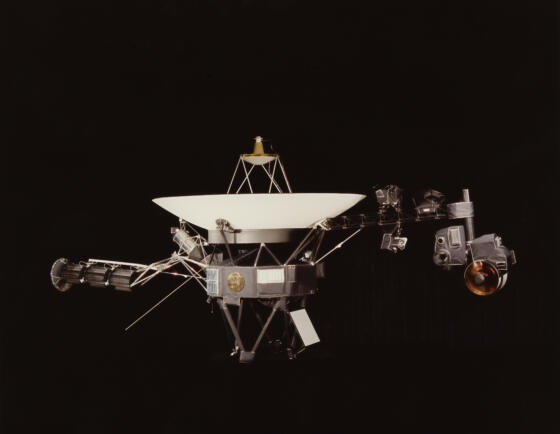From humming to buzzing
In view of the climate crisis, stricter environmental regulations, and growing social pressure, the construction sector is concerned about its carbon footprint. According to estimates, the value chain in the construction industry accounts for around 36 percent of the CO₂ emissions within the EU and on a global scale the United Nations mention up to 38 percent. By far the lion’s share of greenhouse gases is generated during the production of the construction materials and during the operation of the finished buildings. Regardless of that, the international construction equipment industry is committed to doing more also in terms of decarbonization during the construction stage, as bauma, its globally leading trade fair showed in Munich. In addition, the focus there was on digitalization and automation – not only for the purpose of cutting costs and compensating for skilled labor shortage but also for reasons of sustainability.
The future is autonomous
Like in the automotive industry and in farming, the construction sector is headed in the direction of autonomy. Software applications such as fleet management systems are already facilitating the operation of construction equipment today. The next steps are (partly) automated or even autonomous loading aids, construction machines, or construction robots.
“In terms of operating machinery, there is significant CO₂ reduction potential. The industry increasingly uses digital assistance systems and workflow automation.”
Joachim Schmid, Managing Director in the Field of Construction Machinery and Construction Material Systems at the German Mechanical Engineering Industry Association (VDMA)
To some extent, the challenges faced by the developers of construction machinery are considerably more complex than those, for instance, in automotive engineering. There’s a wide variety of machines operating at construction sites such as plate compactors, excavators, or dumpers, each covering specific service scenarios. Every construction site is unique and the environment constantly changes due to weather conditions, construction progress, people walking around, machines moving around, new material deliveries, and changing storage locations. In addition, there are extreme climatic conditions ranging from up to 60 degrees centigrade (140 degrees Fahrenheit) in the United Arab Emirates or down to minus 40 degrees centigrade/Fahrenheit in Canada, plus challenges posed by desert dust, monsoon rain, or extremely high elevations.
In addition, legal and safety aspects would have to be clarified for the utilization of autonomous construction machines. In a press release, Alexander Schock-Schmidtke from the Chair of Materials Handling, Material Flow, Logistics (fml) at Technical University Munich (TUM) emphasizes that the framework and general conditions for autonomous construction machinery would have to be investigated and defined in greater detail. It must be clarified what capabilities the machines would have to have for what applications, what data could be captured by the sensors, and how such data would be stored. “In the end, what counts is what information I can get from the data for the construction site and the construction machine. On this basis, I can think about further automation levels in the next step,” explains Schock-Schmidtke.
Alternative drive concepts
In addition to automation, sustainability plays a key role in the development of construction machinery. The fml Chair found out that all of the 27 construction machinery manufacturers investigated worldwide offer battery-electric drives, five use fuel cells, and four use hydrogen in combination with internal combustion engines. The scientists assume that the future type of drive will be a mix of all of these concepts.
Already obvious at bauma was the fact that fully electric or hybrid construction machines are gaining traction. They’re not only emission-reduced or even emission-free but also clearly less noisy – ideally suited for use in critical urban areas. Interesting in that regard is the fact that, in addition to battery-electric drives among the equipment with low activity radii, versions with high-voltage cables are being offered. Why use costly batteries if power can be supplied from a socket?
For heavy-duty machinery with high activity radii and high energy consumption, hydrogen is a promising alternative. The first prototypes of hydrogen excavators are being tested (see picture gallery). The utilization of hydrated vegetable oil (HVO) as a renewable fuel promises major greenhouse gas reduction potential as well. Manufacturers are assuming it to amount to as much as 90 percent.
Another trend points to electric linear drives instead of hydraulic actuators. These systems score with energy efficiency and low-noise operation, plus there’s no risk of environmental damage due to leakage.
Consistently growing digitalization and automation helps reduce CO2 emissions as well. Modern telematics and sensor systems make it possible to control machines with greater precision, generate less no-load running, reduce fuel consumption, and predict maintenance requirements. The industry generally welcomes all technical developments that enhance the efficiency of construction machinery and cut operating costs.
Some of the highlights at bauma 2025
Schaeffler at bauma
At bauma 2025 in Munich, Schaeffler showed how technological innovations and optimizations help make the construction machinery sector more sustainable and efficient. In addition to the electrification of propulsion units and working functions, the motion technology company emphasizes the consistent use of friction-optimized rolling bearings and sensors. The objective is to continue to increase the efficiency of construction machines and to reduce TCO (total cost of ownership).
“tomorrow” shows innovations that Schaeffler presented at bauma.




Interested readers can find more detailed information on how Schaeffler drives electrification and sustainability in the construction machinery sector under this link.






